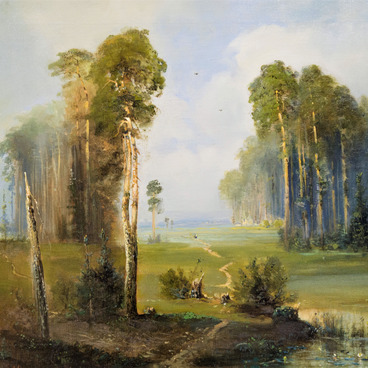The icon ‘The Nativity of Christ’ is dedicated to one of the most important holidays of the Christian calendar. The iconography of the holiday, based on the canonical Gospels and Apocrypha, had developed by the 7th century.
According to these sacred texts, the Savior was born in Bethlehem. Mary wrapped the Child and put him in a manger. The Magi and shepherds, who heard about the birth of the Savior from the angels, came to worship the Infant. The Magi brought the gifts — gold, frankincense, and myrrh, a gum-resin that the Jews traditionally used to anoint the dead. The gifts had a special meaning: gold as a gift to the King, frankincense as a gift to the High Priest and Deity, myrrh as a gift to a mortal Man. The Nativity of Jesus was the Incarnation, which opened the possibility of salvation for people. The Nativity started a new era in the history of humankind.
There are two main options for the versions of iconographic images called ‘izvody’ — the short and the expanded one. The icon from the museum collection is an expanded version. It is not limited with the central scene with Mary, who reclines on the red bed, and the Child in a manger. The icon also features other scenes that are connected to the Gospel story: the Procession and Adoration of the Magi, the Bathing of the Infant Jesus, the Doubt of St. Joseph, Flight into Egypt, The Massacre of the Innocents, the Lament of Rachel.
The Nativity of Christ icon follows the artistic traditions of Kostroma. Surprisingly harmonious and holistic, the icon displays a subtle harmony of color and composition. Red is the connecting element of the icon. It is depicted in all the areas of the icon board and sets a certain rhythm. The outlines of the hills, a typical landscape in icon painting, divide the adjacent scenes from each other and turn them into separate images. These are the small pictures surrounding the centerpiece, which explain the main scene of the icon. The hills, covered with the elaborate images of grass and trees, evoke associations with the poetical images of prayer hymns, or ‘stichera’, ‘Have fun, righteous ones, Heaven rejoice, Leap, mountains, Christ is Born’.
The icon entered the museum from the collection of the Moscow collector Valerian Velichko.
There are two main options for the versions of iconographic images called ‘izvody’ — the short and the expanded one. The icon from the museum collection is an expanded version. It is not limited with the central scene with Mary, who reclines on the red bed, and the Child in a manger. The icon also features other scenes that are connected to the Gospel story: the Procession and Adoration of the Magi, the Bathing of the Infant Jesus, the Doubt of St. Joseph, Flight into Egypt, The Massacre of the Innocents, the Lament of Rachel.
The Nativity of Christ icon follows the artistic traditions of Kostroma. Surprisingly harmonious and holistic, the icon displays a subtle harmony of color and composition. Red is the connecting element of the icon. It is depicted in all the areas of the icon board and sets a certain rhythm. The outlines of the hills, a typical landscape in icon painting, divide the adjacent scenes from each other and turn them into separate images. These are the small pictures surrounding the centerpiece, which explain the main scene of the icon. The hills, covered with the elaborate images of grass and trees, evoke associations with the poetical images of prayer hymns, or ‘stichera’, ‘Have fun, righteous ones, Heaven rejoice, Leap, mountains, Christ is Born’.
The icon entered the museum from the collection of the Moscow collector Valerian Velichko.



